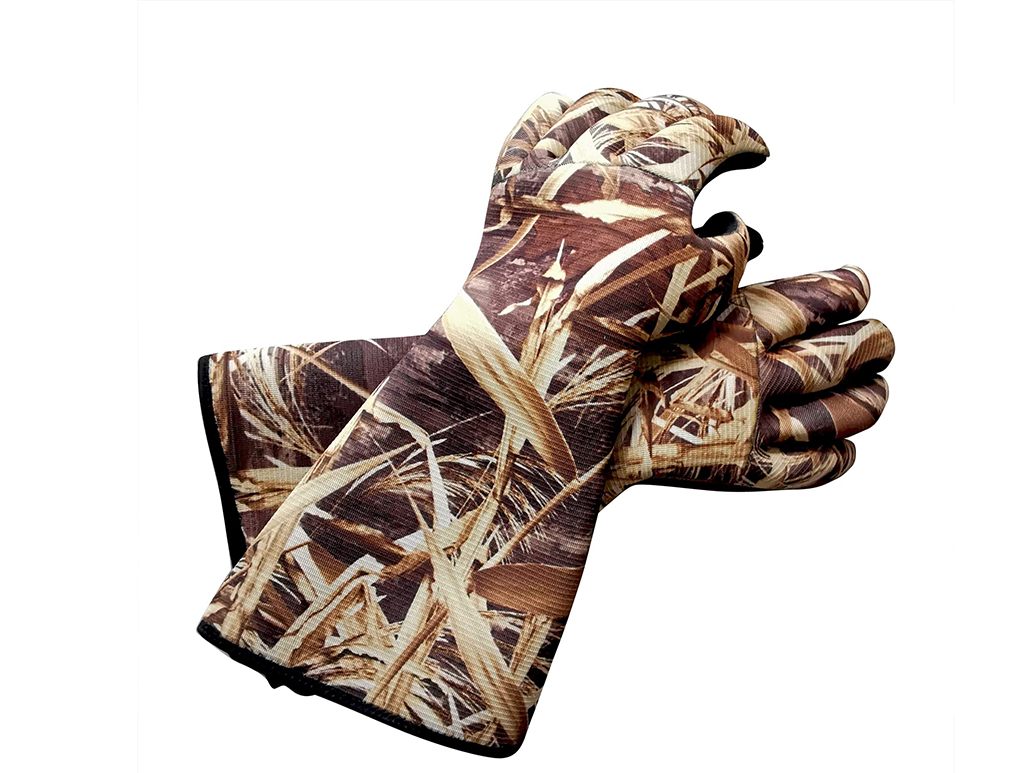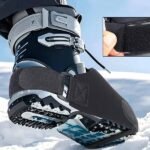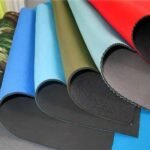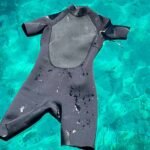Have you ever been out fishing or engaging in water sports only to find your hands getting cold and wet despite wearing gloves? It can be frustrating and uncomfortable, hindering your performance and enjoyment. The right pair of gloves can make all the difference, but how do you choose the best ones to keep your hands dry and warm?
Neoprene gloves are designed to provide waterproof protection, keeping your hands dry and insulated in wet conditions.
I recall a chilly morning kayaking trip where my neoprene gloves kept my hands warm and dry, allowing me to paddle comfortably without the discomfort of cold, wet hands. This experience made me realize the importance of understanding the true waterproof capabilities of neoprene gloves.
Let’s delve into whether neoprene gloves are truly waterproof and explore their various benefits and uses.
What Are Neoprene Gloves and What Are They Used For?
What exactly are neoprene gloves, and what activities are they best suited for? Neoprene gloves are waterproof gloves made from neoprene, a synthetic rubber material known for its flexibility and insulation properties. They are commonly used in water-related activities such as fishing, kayaking, surfing, and diving to keep hands dry and warm.
Neoprene gloves are essential for activities that involve prolonged exposure to water, providing both waterproofing and thermal insulation.
During a winter fishing expedition, my neoprene gloves allowed me to handle fishing rods and reels without discomfort, keeping my hands dry and warm even in icy waters.
Dive Deeper: Materials and Design of Neoprene Gloves
Neoprene Composition
Neoprene is a versatile material that offers excellent waterproofing and insulation. The thickness of neoprene used in gloves typically ranges from 2mm to 7mm, with thicker materials providing more warmth and durability. This makes neoprene gloves suitable for various temperature conditions and water activities. Neoprene Material
Design Features
Neoprene gloves often feature reinforced palms and fingers for enhanced grip and durability. Adjustable wrist straps ensure a snug fit, preventing water from entering the gloves. Some designs include textured surfaces to improve grip, which is particularly useful in slippery conditions.
| Feature | Description |
|---|---|
| Material | Neoprene, a flexible and insulating synthetic rubber |
| Thickness | 2mm to 7mm for varying levels of warmth and protection |
| Reinforcements | Enhanced durability at palms and fingers |
| Adjustability | Adjustable wrist straps to prevent water ingress |
| Grip Enhancement | Textured surfaces for better handling |
Understanding the materials and design of neoprene gloves helps in selecting the right pair that meets your specific needs for waterproofing, warmth, and durability.
What Are the Benefits of Neoprene Gloves?
Why should you choose neoprene gloves over other types of gloves? Neoprene gloves offer several advantages, including excellent waterproofing, thermal insulation, flexibility, and durability. These benefits make them ideal for various water-related activities, ensuring your hands remain dry, warm, and capable of handling equipment effectively.
Neoprene gloves provide superior waterproofing, insulation, flexibility, and durability, making them ideal for water-based activities.
On a cold morning kayaking trip, my neoprene gloves kept my hands warm and allowed me to maneuver the paddle with ease, enhancing my overall performance and comfort.
Dive Deeper: Expanding on the Benefits
Thermal Insulation
Neoprene’s inherent insulating properties trap a thin layer of water between the glove and your skin, which is then warmed by your body heat. This helps maintain your hand temperature, preventing heat loss in cold water environments.
Waterproofing
The closed-cell structure of neoprene makes it highly water-resistant, preventing water from seeping in and keeping your hands dry. This is essential for activities like fishing and diving, where staying dry is crucial for both comfort and performance.
Flexibility and Dexterity
Neoprene is a flexible material that allows for a wide range of motion. This flexibility ensures that you can perform tasks that require precision, such as tying knots or adjusting gear, without feeling restricted by your gloves.
Durability
Neoprene gloves are built to withstand harsh conditions and frequent use. Reinforced areas and high-quality materials ensure that the gloves remain functional and effective over time, making them a worthwhile investment.
| Benefit | Description |
|---|---|
| Thermal Insulation | Maintains hand warmth in cold conditions |
| Waterproofing | Keeps hands dry by preventing water ingress |
| Flexibility | Allows for a wide range of motion and dexterity |
| Durability | Resistant to wear and tear, ensuring long-term use |
By understanding these benefits, you can appreciate why neoprene gloves are a preferred choice for many outdoor and water enthusiasts.
How Do You Know if Gloves Are Waterproof?
How can you determine if your gloves are truly waterproof? Assessing the waterproof capabilities of gloves involves examining the material, construction, and any additional waterproofing treatments. Neoprene gloves are inherently waterproof, but it’s important to check for features like sealed seams and quality materials to ensure maximum protection.
To know if gloves are waterproof, check the material composition, seam construction, and any waterproofing treatments applied to the gloves.
During a rainstorm fishing trip, I noticed that my neoprene gloves remained dry, while my cotton gloves quickly became soaked. This experience highlighted the importance of selecting gloves with proper waterproof features.
Dive Deeper: Assessing Waterproof Features
Material Composition
The primary indicator of waterproof gloves is the material used. Neoprene, Gore-Tex, and other synthetic materials are known for their waterproof properties. Avoiding materials like cotton, which absorb water, is crucial for maintaining dryness. Gore-Tex and Waterproof Materials
Seam Construction
Sealed or welded seams are essential for preventing water from entering through the stitching. Gloves with taped seams or glued seams offer better waterproofing compared to those with traditional stitched seams.
Waterproofing Treatments
Some gloves come with additional waterproofing treatments, such as DWR (Durable Water Repellent) coatings, which enhance the material’s ability to repel water. These treatments can significantly improve the overall waterproofing of the gloves. DWR Coating
Testing Waterproofness
A practical way to test if gloves are waterproof is to submerge them in water for a short period. Check for any signs of water ingress, especially around the seams and cuffs. However, this method should be used with caution to avoid damaging the gloves.
| Feature | Importance |
|---|---|
| Material Composition | Ensures inherent waterproof properties |
| Seam Construction | Prevents water ingress through stitching |
| Waterproofing Treatments | Enhances water repellency |
| Testing Waterproofness | Verifies actual performance |
By evaluating these aspects, you can confidently determine the waterproof capabilities of your gloves, ensuring they meet your specific needs for dryness and protection.
What Does Neoprene Protect You From?
What types of protection do neoprene gloves offer? Neoprene gloves provide protection against cold temperatures, water exposure, abrasions, and certain chemicals. Their insulating properties help maintain body heat, while the durable material shields your hands from environmental hazards encountered during various water activities.
Neoprene protects your hands from cold temperatures, water exposure, abrasions, and some chemicals, ensuring comfort and safety during water-based activities.
While rock climbing, my neoprene gloves protected my hands from sharp edges and cold temperatures, allowing me to focus on my climb without discomfort or injury.
Dive Deeper: Comprehensive Protection Offered by Neoprene
Cold Temperature Protection
Neoprene’s insulation properties are vital for maintaining hand warmth in cold water environments. This prevents heat loss and reduces the risk of conditions like frostbite or hypothermia during extended periods in cold water.
Abrasion Resistance
The durable nature of neoprene provides a protective barrier against rough surfaces, sharp objects, and abrasive materials. This is particularly useful in activities like kayaking, fishing, and rock climbing, where hands are frequently exposed to harsh conditions.
Chemical Resistance
Neoprene is resistant to oils, greases, and certain chemicals, making it suitable for industrial applications as well as outdoor activities where exposure to these substances is possible. This resistance ensures that the gloves remain intact and functional even in challenging environments. Neoprene Industrial Use
UV Protection
Some neoprene gloves come with UV-resistant coatings, protecting your hands from harmful ultraviolet rays during prolonged sun exposure. This is beneficial for outdoor activities like beach volleyball and surfing. UV Protection in Neoprene)
| Protection Type | Description |
|---|---|
| Cold Temperature | Maintains hand warmth, prevents heat loss |
| Abrasion Resistance | Shields hands from rough and sharp surfaces |
| Chemical Resistance | Protects against oils and certain chemicals |
| UV Protection | Guards against harmful ultraviolet rays |
Understanding the various protections offered by neoprene gloves highlights their versatility and effectiveness in safeguarding your hands during diverse activities.
How Do You Care for Neoprene Gloves to Maintain Their Waterproofing?
How can you ensure your neoprene gloves remain waterproof over time? Proper care and maintenance are essential to preserve the waterproofing and extend the lifespan of your neoprene gloves. This includes cleaning, drying, and storing them correctly after use.
Maintaining waterproofing in neoprene gloves involves regular cleaning, thorough drying, and proper storage to preserve the material’s integrity and functionality.
After a long day of fishing, I made sure to rinse my neoprene gloves with fresh water and let them air dry completely. This simple routine prevented mold buildup and maintained their waterproof properties for future use.
Dive Deeper: Effective Care and Maintenance Practices
Cleaning Neoprene Gloves
After each use, rinse your neoprene gloves with fresh water to remove dirt, salt, and other residues. Use a mild soap solution if necessary, but avoid harsh chemicals or detergents that can degrade the neoprene material.
Drying Neoprene Gloves
Allow your gloves to air dry naturally in a well-ventilated area away from direct sunlight and heat sources. Avoid using dryers or placing them near radiators, as excessive heat can cause the neoprene to lose its flexibility and waterproofing.
Storage Tips
Store your neoprene gloves in a cool, dry place. Avoid folding or compressing them tightly, as this can create permanent creases and weaken the material over time. Hanging them or laying them flat ensures they retain their shape and functionality.
Additional Maintenance
Periodically inspect your gloves for any signs of wear, such as cracks or tears. Addressing these issues promptly can prevent water ingress and extend the gloves’ lifespan. Applying a neoprene protectant can also help maintain the material’s waterproofing and flexibility.
| Maintenance Task | Best Practices |
|---|---|
| Cleaning | Rinse with fresh water, use mild soap if needed |
| Drying | Air dry naturally, avoid direct sunlight and heat |
| Storage | Keep in a cool, dry place, avoid tight folding |
| Inspection | Regularly check for wear and tear, repair promptly |
| Protectant Use | Apply neoprene protectant to maintain flexibility |
By following these care and maintenance practices, you can ensure that your neoprene gloves remain waterproof and in excellent condition for years to come.
Conclusion
Neoprene gloves are a versatile and essential accessory for anyone involved in water-based activities. They provide superior waterproofing, thermal insulation, and protection against environmental hazards, ensuring your hands remain dry, warm, and safe. Whether you’re fishing in cold waters, kayaking through rapids, or engaging in industrial work, neoprene gloves offer the necessary protection and comfort to enhance your performance and enjoyment.











